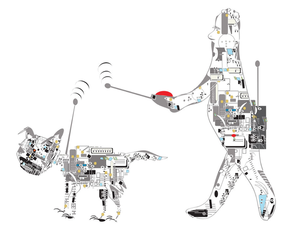Little Bit
The tiny micro:bit single-board computer from the BBC can be used both as an alternative and as a handy companion to the Raspberry Pi. Get started with this simple yet versatile machine.

Lead Image © victor kuznetsov, 123RF.com
The tiny micro:bit single-board computer from the BBC can be used both as an alternative and as a handy companion to the Raspberry Pi. Get started with this simple yet versatile machine.
The Raspberry Pi single-board computer (SBC) and its countless variants can be used for any project imaginable: from learning to code and building a personal server, to exploring the Internet of Things, to building robots. Because it's a computer that runs a full-blown operating system, Raspberry Pi requires some technical skills and effort to master, and it can be overkill for some projects. Of course, Arduino provides a simpler and more approachable physical computing platform. But wouldn't it be great if you could find a device that combines the versatility of Raspberry Pi with the simplicity of Arduino?
Enter BBC micro:bit [1]. It's probably unfair to call this tiny machine (Figure 1) a mere cross between Raspberry Pi and Arduino, because micro:bit is a unique and innovative device in its own right, and it has several advantages that make it a worthy alternative to both Raspberry Pi and Arduino. The most obvious advantage is the price: At ~£13 (~$17), micro:bit is cheaper than most Raspberry Pi and Arduino models. Unlike Raspberry Pi, you can use micro:bit right out of the box without going through the rigmarole of downloading an image file, burning it onto an SD card, and then booting and configuring the system. This also means it's practically impossible to make micro:bit unbootable or brick the board altogether. Better still, micro:bit has on-board physical buttons, an LED array, and sensors.
The board supports the MicroPython dialect of the Python scripting language, so you build simple projects right away with a minimum of effort. Similar to Raspberry Pi, micro:bit features a GPIO port, so it's possible to use the board with sensors, motors, and other devices. Add in low power consumption, and you have a board that can be put to a variety of practical uses. The best part is that you can use a Raspberry Pi to program and manage micro:bit.
[...]
Pages: 6
Price $15.99
(incl. VAT)